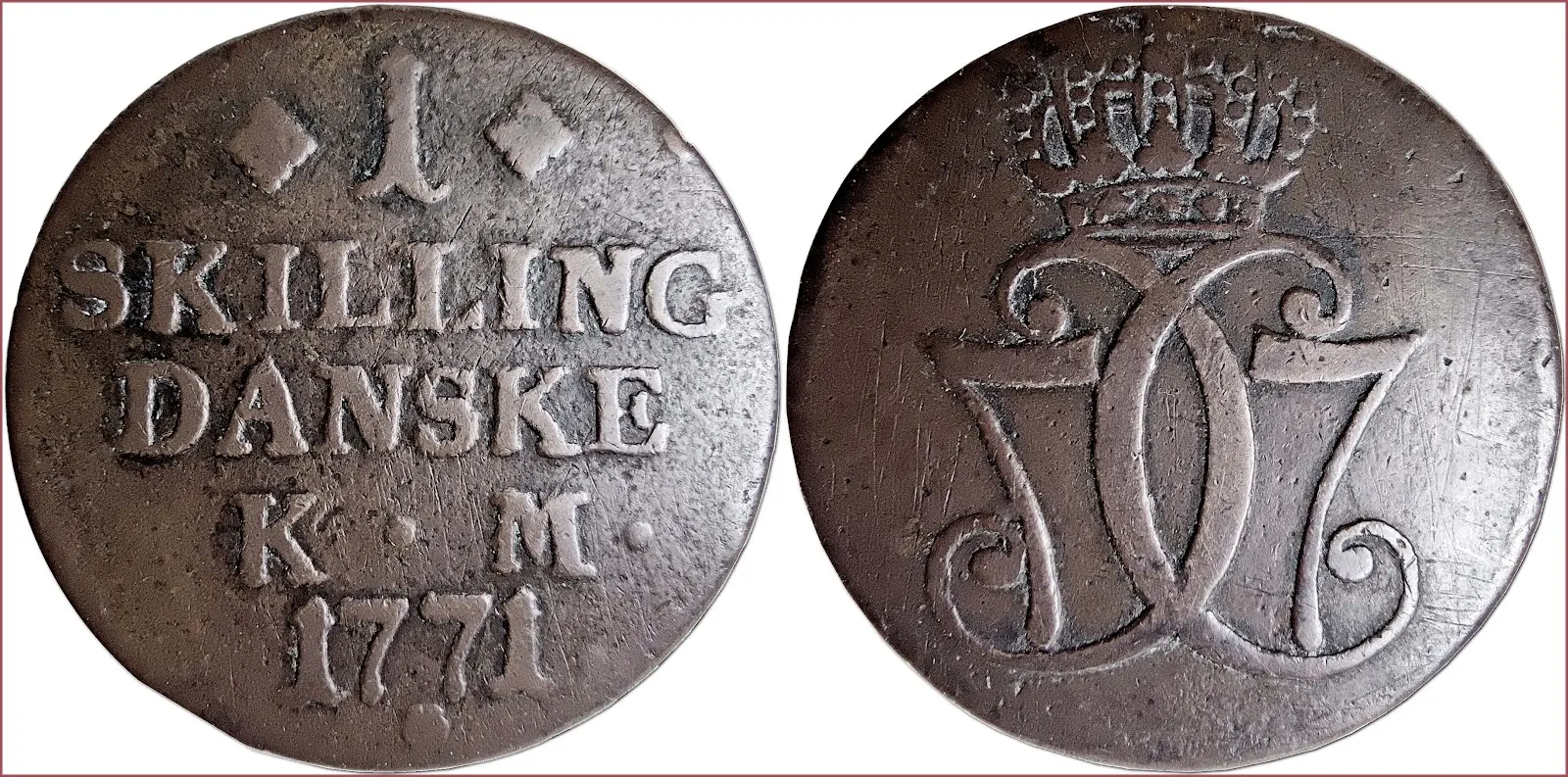SKILLING: COIN OF DENMARK
1 skilling, 1771: Kingdom of Denmark
During 1524-1533 and 1537-1814 the Kingdom of Denmark was a part of the union state: Dano-Norwegian Realm.
Ruler: Christian VII of Denmark — a King of Denmark-Norway and Duke of Schleswig and Holstein (1766-1808); monarch of the House of Oldenburg.
1 SKILLING DANSKE - K M - 1771: 1 skilling of Denmark (1771); KM — initials of mints carvers (according to other numismatic sources KM — Kaaber /kobber/ Mønt = Copper Coin; there is another version: KM — Kongelige Mønt = Royal Coin).
This type of Danish coin was struck during 1771-1785 with a frozen date (1771) in huge quantities. Three mints were involved: in Altona (modern Germany; now it is one of the districts of Hamburg), in Copenhagen (capital of Denmark) and in Kongsberg (Norway).
Monogram of King Christian VII with a crown (double "C" and "7" — mirrored).
Interesting: the Danish 1 skilling 1771 was struck in about 55 million copies, which makes it Denmark's most common skilling coin. Due to the many 7s (two in the year and two in Christian's VII monogram), this particular coin was often used as a lucky coin (the number 7 is considered lucky in many nations). Therefore, after 2 and a half centuries, it remains a fairly common coin among numismatists.
- Copper: 30 mm - 11.31 g
- Reference price: 9$
COIN SKILLING — WHERE & WHEN (coins catalog: by names & emitents)
- KINGDOM OF DENMARK (15th-19th centuries): skilling = 1/16 mark = 1/96 rigsdaler
- KINGDOM OF NORWAY (16th-19th centuries): skilling = 1/24 mark = 1/120 speciedaler
- KINGDOM OF SWEDEN (16th-19th centuries): skilling = 1/48 riksdaler
In fact, at different times skilling was a change coin for different monetary units of Denmark, Norway and Sweden. In addition to these mentioned countries, the issue of skillings was also carried out for their dependent territories: for example, Danish West Indies.
Regarding the name of the coin skilling: the coin can be considered as a Scandinavian analogue of English shilling or German schilling.

